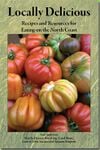In The Yard[edit | edit source]
Growing your own food can be economically rewarding as well as provide the absolutely freshest food. The convenience can’t be beat—just walk into your garden for today’s salad and vegetables. Go to the chicken coop for eggs. Children will find this all fascinating (adults, too).
| During World War II, the government encouraged citizens to plant “Victory Gardens.” Resources for transportation of all sorts were becoming scarce, so local production became more important. (History may be repeating itself, with the cost of gasoline and diesel fuel rising.) Nearly 20 million people started gardens. Judge Marvin Jones, acting as War Food Administrator, stated that
these gardens produced 8 million tons of food supplies, which added up to an astounding 40 percent of all vegetables grown for consumption in the United States in 1942.[1] Eleanor Roosevelt started a Victory Garden on the White House grounds. And today, for the first time since World War II, we have an organic garden on the lawn of the White House, tended by our First Lady, Michelle Obama. |
Appendix H provides more information on growing your own food.
[edit | edit source]
You may have a yard or some land that would make a wonderful garden, but can’t grow the food yourself. You may be able to find someone who would love to grow food on your land. You provide the land, someone else provides the labor, and you both share in the produce.
| Urban Garden Share is a web-based service located in Seattle, Washington, that matches gardeners to gardens. See their site at www.urbangardenshare.org. They describe themselves: “Urban Garden Share pairs together eager gardeners with eager gardens. When neighbors come together and cooperatively grow food, dirt flies and good things happen.” The possibility exists locally for such a service. |
Or simply hire someone to put the garden in for you. We have a new category of businesses focused on creating food gardens. We listed them in Appendix H, but you can also ask your local garden store or landscaping service if they can help. Check with a local farmer—some might like the opportunity to “foodscape” your yard.
Community Gardens[edit | edit source]
Lacking land, you can grow food in a community garden. Working with other people can be fun. Check local zoning laws to see where gardens are permitted. Consult the agricultural extension office to see if there is an existing community garden near your. Appendix H lists all the community farms we could find. We hope more will be created.
References[edit | edit source]
- ↑ Renee, American Victory Gardens in World War II, January 2009; http://www.hipchickdigs.com/wordpress/we-content/uploads/2009/01/american-victory-gradens-in-wwii.pdf
